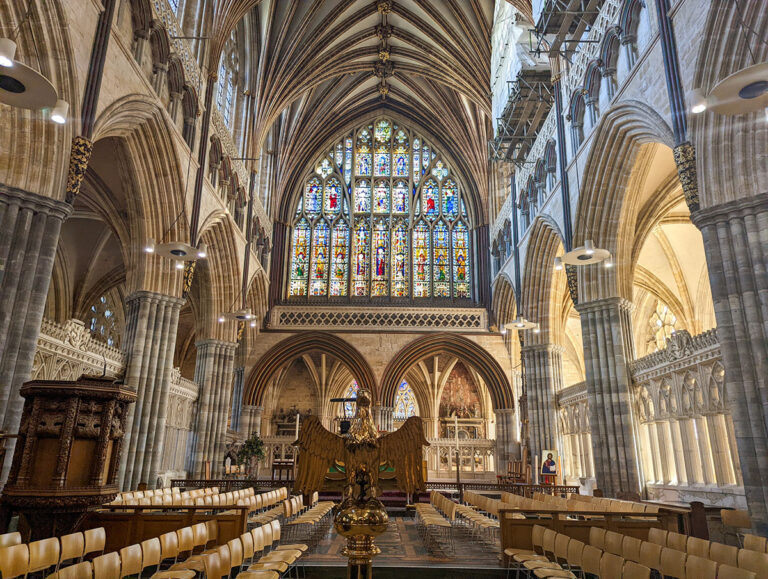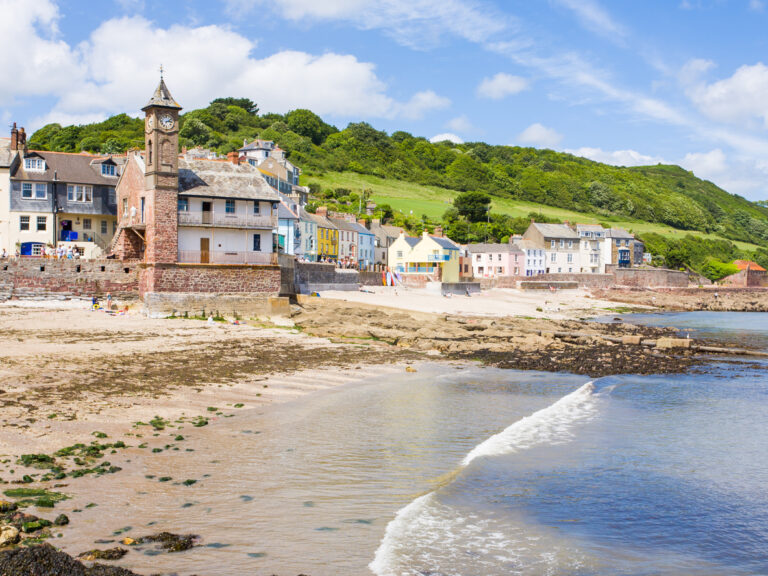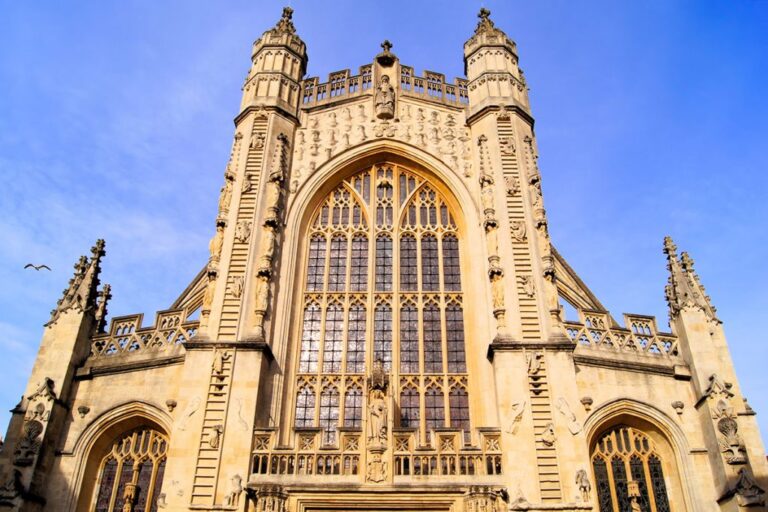How to visit Bath Abbey, Somerset: full guide & tips
Overshadowing the city of Bath, its majestic abbey stands as an omnipresent reminder of the city’s complex and fascinating past.
While the abbey is Medieval, it’s been left derelict and refurbished, and was even the site of where the first king of all England was first crowned!
Plus, it’s free to visit this gem of Bath (although donations are very much appreciated). Here’s all you need to know about the abbey’s history, things to see inside and Go South West’s best visiting tips.
I’m Claire, owner of Go South West England and a big Bath fan – I spent a year living in this fascinating city and, nowadays, I’m a regular visitor! Here’s my full take on Bath Abbey!
About Bath Abbey
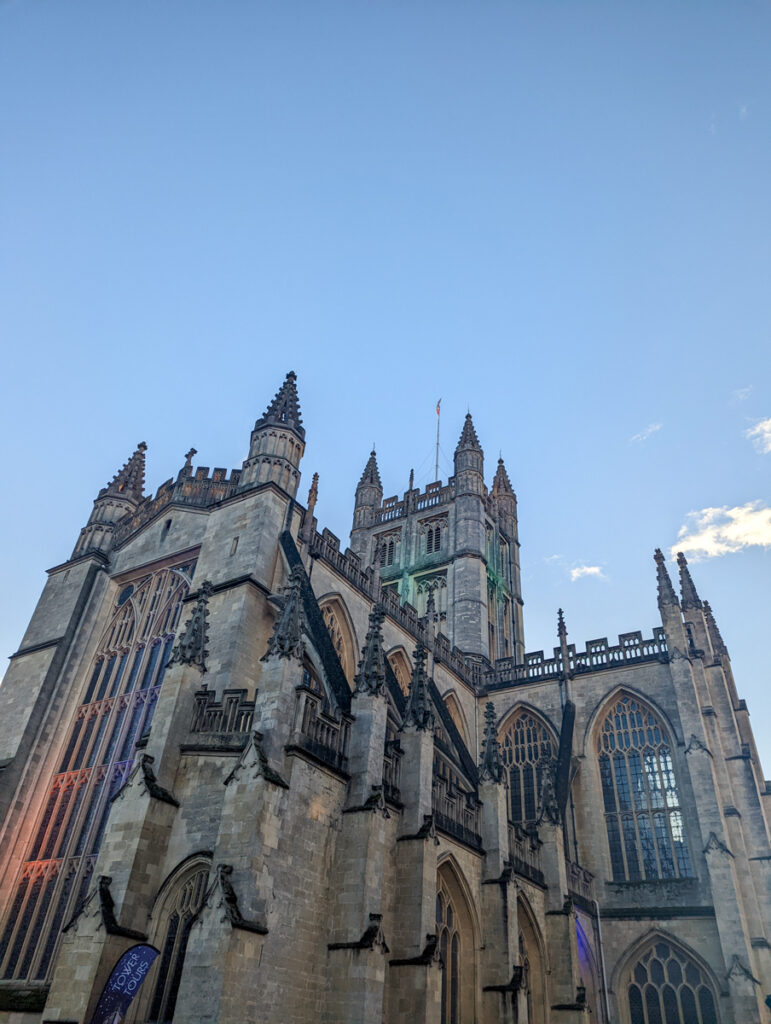
The Romans occupied bath from around 50 AD until 400 AD, when the Anglo-Saxons took over. They built the first church on the current location of Bath Abbey in 675 AD.
First, it was a Saxon Convent, and it was the site of the first king of all of England (Edgar’s) coronation.
Post-1066, a Norman Monastery was built here.
But after 400 years, the abbey was in a ruinous state. In 1499, Bishop Oliver King (who was Bishop of Exeter then the See of Bath and Wells) had a dream about angels travelling to earth by climbing down an Olive Tree.

He took this dream as a sign that he should be the one to rebuild Bath Abbey, and did just that.
However, if you know Tudor history, you’ll have a good idea about what came next… the Dissolution of the Monasteries.
Henry VIII wanted to divorce his first wife, Katherine of Aragon and marry a lady called Anne Boleyn but wasn’t allowed to while England was a Catholic country.
So, he broke with Rome and founded the Church of England. If you think that’s dramatic, he chopped Anne Boleyn’s head off a few years later – the Tudors were a wild time!
The Dissolution of the Monasteries meant that all of the Catholic churches and convents were shut.
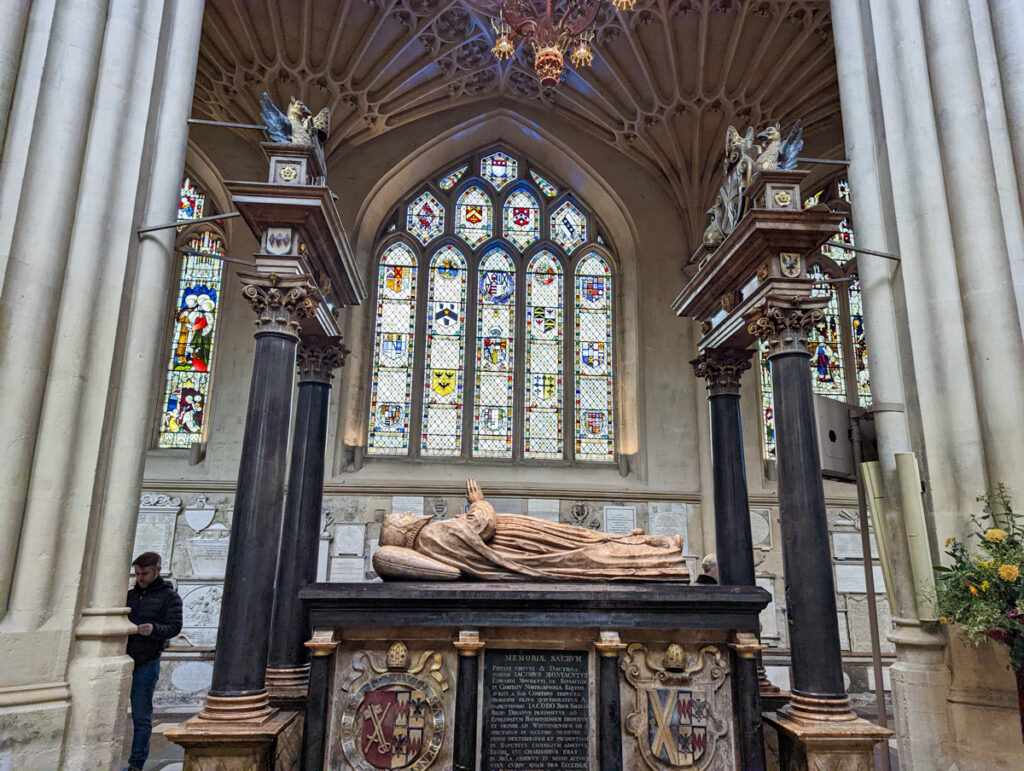
When Queen Elizabeth I (Henry VIII’s daughter) was on the throne in the 15th century, she gave permission for the restoration of the church; and so it was rebuilt and revamped into (more or less) the abbey that you see today.
Look out for the engravings of ladders, olive trees and angels, which represents Bishop Oliver King’s dream!
Bath was bombed during World War Two, and while the Abbey wasn’t bombed, a nearby attack damaged the Great East Window. However, thankfully the rest of the building was mostly unscathed.
Sometimes known as “The Lantern of the West” because 67% of the walls are stained glass windows, Bath Abbey is nowadays a top tourist attraction in Bath.
Things to do in Bath Abbey
There are so many things to do and see in Bath Abbey; here are just a few!
Look out for the Bishop Oliver King-inspired engravings at the front

Bishop Oliver King was instrumental in the restoration of Bath Abbey and without him, the city may not be the place it is today.
Sadly, he died before the Abbey was finished, but his dream about angels descending to an olive tree on earth is immortalised at the front.
See engravings of a ladder with angels climbing down on the side facing the square where the Roman Baths and Pump Rooms are based.
Enjoy the stained glass windows
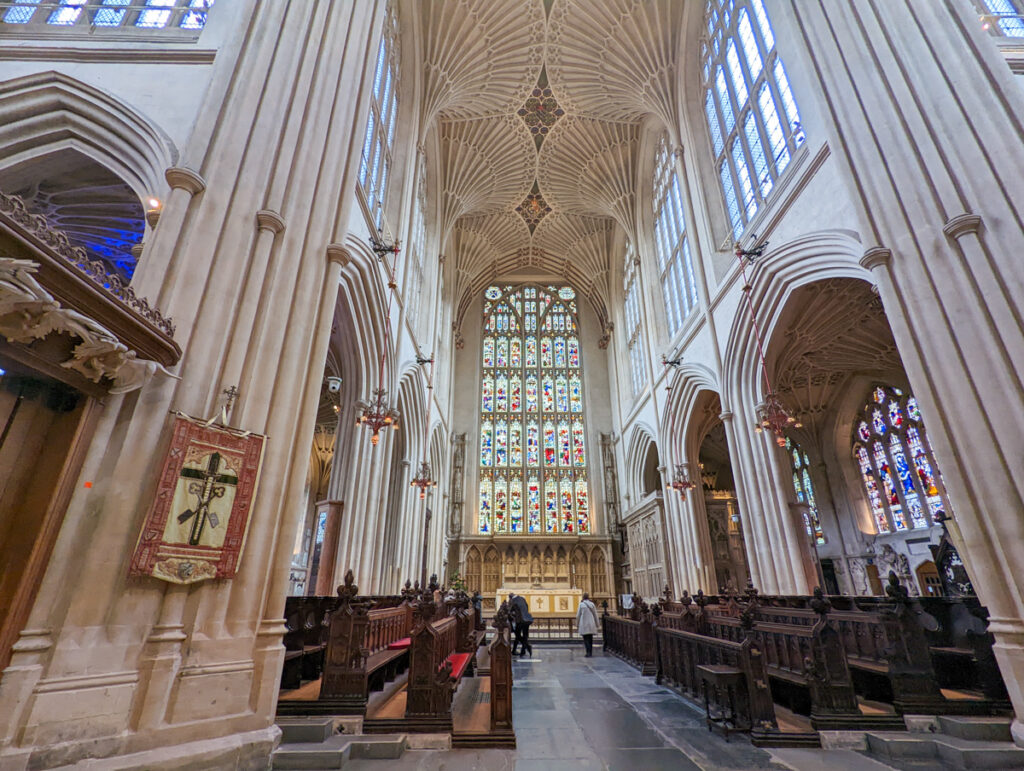
Bath Abbey is sometimes called the “lantern of the east” thanks to the fact that it has a whopping 52 stained glass windows.
One was even discovered as recently as 2010 – so could there be even more hiding away somewhere in its vaults?
My favourite stained glass window is the one that depicts when Edgar, the first King of all of England, was crowned at Bath Abbey in 973 AD.
It sits at the back of the abbey. There used to be a plaque on the outside commemorating his coronation, but it was taken down a few years ago when the abbey was restored and hasn’t been put back up yet.
Great East Window
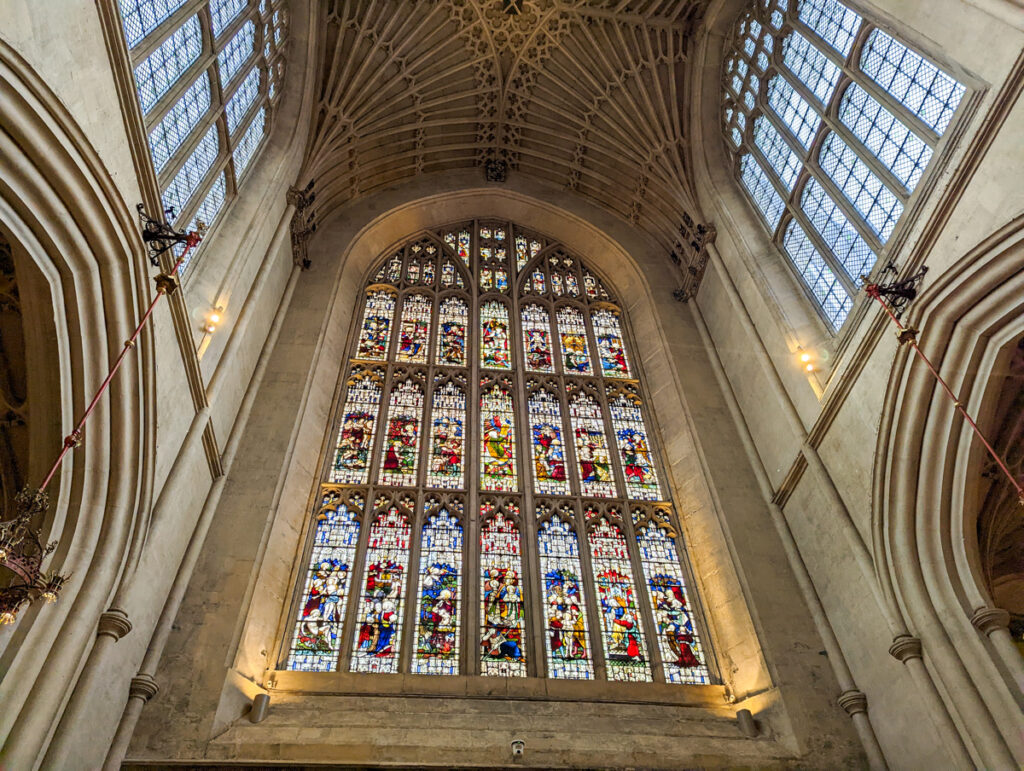
The Great East Window depicts the story of Jesus in 56 scenes. This was one part of the abbey that was badly damaged in World War Two, but it has since been lovingly restored.
Look up

The fan vaulting ceiling, while not quite as impressive as Exeter Cathedral’s, is still worth looking up at! It started in the 16th century, although parts weren’t finished until the 18th.
Walk into the North Transept
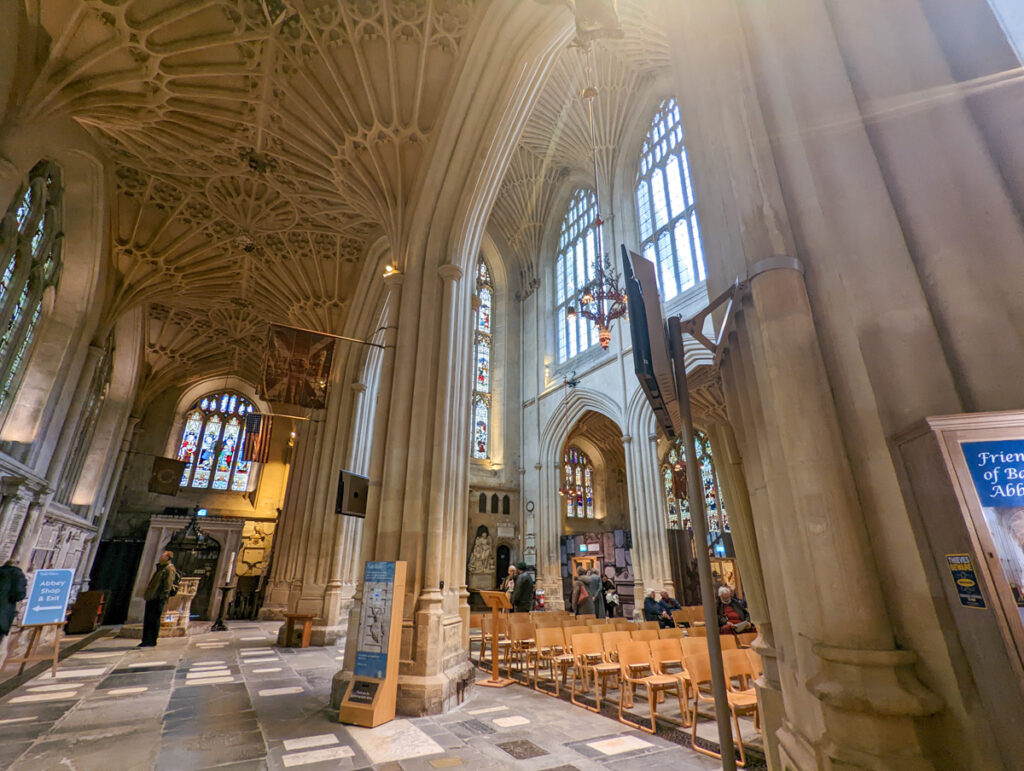
This part of the Abbey used to be closed to the public, but it’s recently been restored so guests are invited to see the recent restorations, including the stained glass windows and spiral staircase that leads to the organ.
Do a tower tour
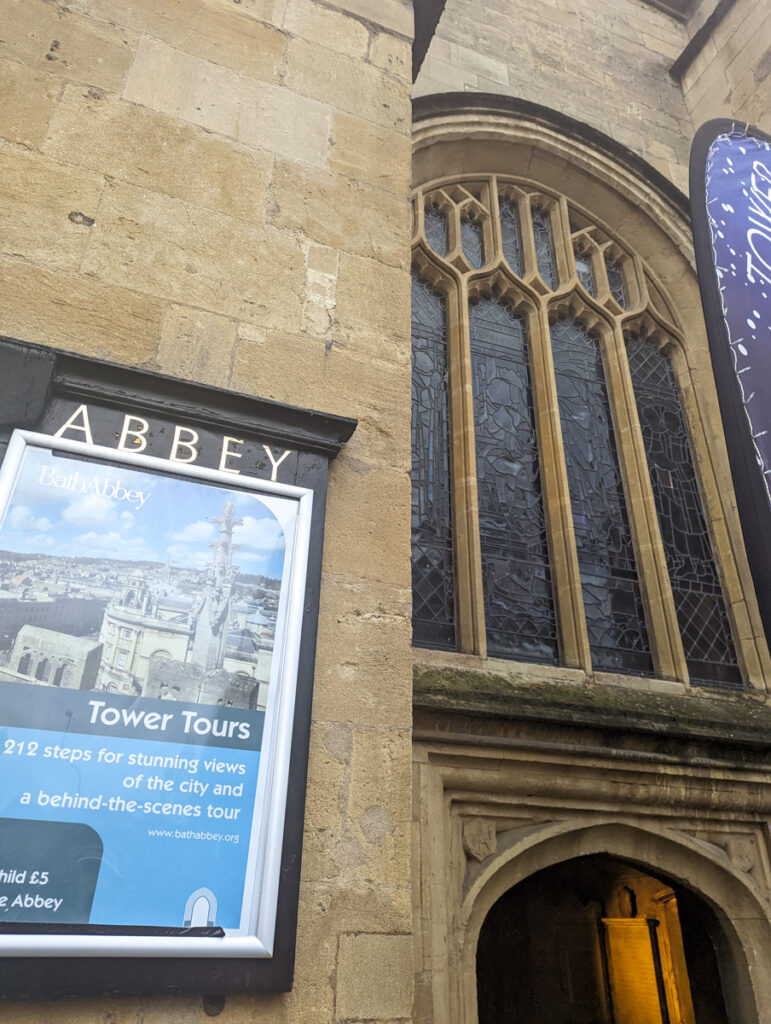
One of my favourite things to do in Bath Abbey is to ascend it! In these tower tours, you’ll learn all about the inner workings of the building, and it’ll help you see Bath from a totally new perspective.
You’ll finish the tour by summiting to the top of the building and enjoying one of the best views in Bath.
Visiting information
Where is Bath Abbey?
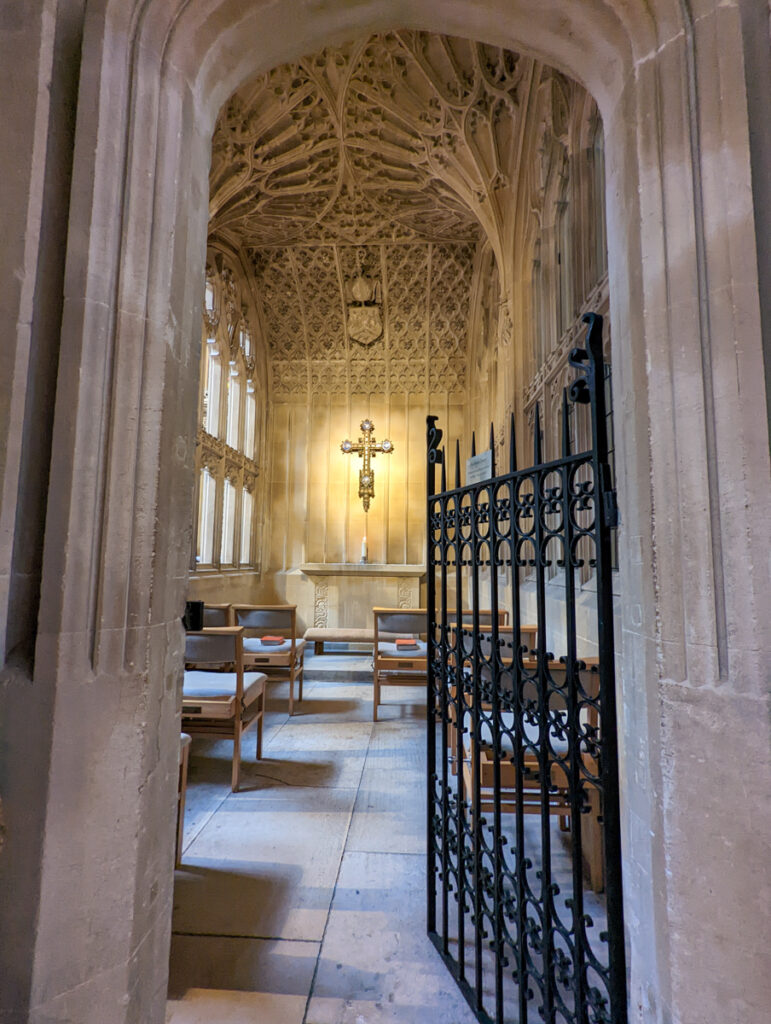
Bath Abbey is easy to get to, as it’s right in the middle of Bath city centre.
Located in the Abbey Churchyard along with the Roman Baths and Pump Rooms, the postcode for Bath Abbey is BA1 1LT.
How much does Bath Abbey cost to enter?
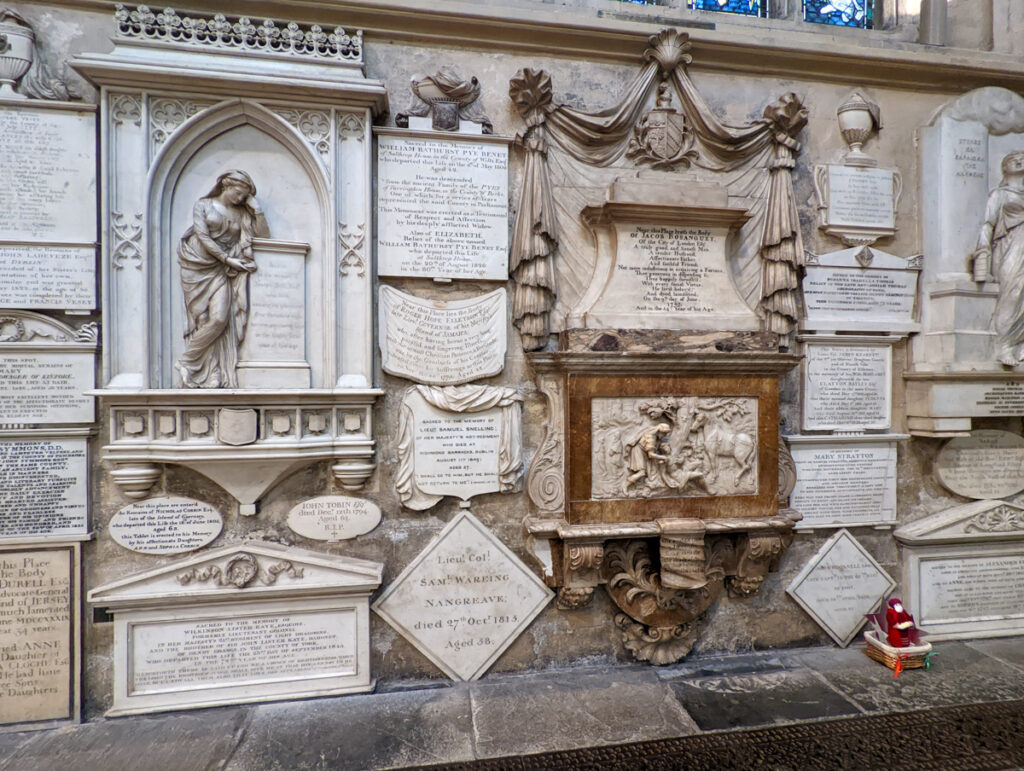
Technically a free Bath attraction, entrance to the abbey is on a donation-only basis.
A £5 donation is recommended, and you can donate by card at the front desk or at any of the cash donation spots around the building.
What are Bath Abbey’s opening hours?
Bath Abbey’s opening hours are the following:
- Monday: 10 am – 5 pm
- Tuesday: 10 am – 5 pm
- Wednesday: 10 am – 5 pm
- Thursday: 10 am – 5 pm
- Friday: 10 am – 5 pm
- Saturday: 10 am – 6 pm
- Sunday: 1:15 – 2:15 pm, 4:30 – 6:15 pm
Is Bath Abbey worth visiting?
Bath Abbey is definitely worth visiting (especially given the fact that it’s donation-only to get in!).
While the city of Bath is commonly known for its Georgian architecture, its history spans back a lot further, and Bath abbey is the ideal place to educate yourself.
If you’re religious, it’s also the perfect setting for worship.
However, religious or not, anyone is welcome at Bath Abbey, and it’s definitely one of the best places to visit in Somerset!
Whether you’re living in Bath or just spending a weekend here, it’s one of the must-visit attractions in the city, summer or winter!


